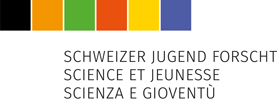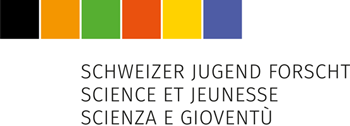Biologia | Ambiente
Elisa Poncioni, 2001 | Sorengo, TI
Tristan Gasparetto, 2001 | Porza, TI
The aim of this research is to investigate the capacity of the acidophilic bacteria Acidithiobacillus ferrooxidans to bioleach copper and be part of the process of copper recycling. First of all, a A. ferrooxidans colture was coltivated in presence of copper (5g/L and 10 g/L) without any pH corrections to study the effect of the metal on the colture. The results showed a correlation between pH increasing, due to copper reactions, and the increasing mortality of bacteria. Other experiments were made on A. ferrooxidans coltures with pH adjustments to keep pH=2 and led to higher percentages of leached copper (from minimum of 40.56% and a maximum of 99.28%). Cu2+ solutions were obtained in concentration between 4.26 g/L and 4.84 g/L and Cu2+ ions were then reducted to metallic copper with electrolysis. In conclusion we were able to solubilize copper using Acidithiobacillus ferrooxidans and reobtain metallic copper through electrolysis completing the process of recycling.
Argomento
It has been proved that the recycling of copper is a less pollutant process compared to primary extraction from mine; studies show that recycling copper produces about 72% less CO2 emissions and requires about 75% less energy compared to pyrometallurgical and hydrometallurgical primary production. Nevertheless, copper recycling techniques still produce CO2 and other waste products such as fine dusts or sulphur gases, which are air pollutants.Using microorganisms such as Acidithiobacillus ferrooxidans it is possible to bioleach metals as copper without CO2 emissions; this bacterium could be industrially employed in the recycling of copper. A. ferrooxidans provides energy from the oxidation of Fe2+ and reduced sulfur compounds. Fe3+ produced from the oxidation of Fe2+ can oxidize metallic copper, producing Cu2+ and Fe2+, which can be reused for the metabolism of A. ferrooxidans. From the reduced sulfur compounds A. ferrooxidans produces sulfuric acid that can, in high concentrations, also leach metallic copper. The aim of this research is to investigate the possibility of leaching copper with A. ferrooxidans and then retrieving metallic copper using different electrolysis techniques, such as electrochemical cells or electrolytical cells.
Metodologia
A. ferrooxidans DSM32046 (patented by TRS®, 20% genetic diversity) was cultivated in a medium made by TRS®. Bacteria were cultivated for two days in a shaking incubator (180 rpm and 28°C) and then pieces of metallic copper were added. There were two controls: one colture of A.ferrooxidans without copper and one solution with medium and metallic copper, to understand if the copper leaching was caused by the medium or the bacteria. Once a day values of pH, conductivity and concentration of bacteria were measured to comprehend respectively the effect of copper on pH, the presence of ions and the bacterial growth.
Risultati
Results showed a relation between copper presence in the colture and pH increasing (from initial pH of 2 to 3.89 and 4.31), which led to bacterial decreasing resulting in an incomplete leaching with percentages between 14.61% and 34.47%. In the second experiment, at constant pH of 2, a similar decrease was not observed and that resulted in a higher percentage of leached copper (40.56% to 99.26%). Cu2+ ions were successfully reduced through electrolysis, and metallic copper was reobtained.
Discussione
The pH increase (from 2 to >3.5) is due to a reaction between copper and sulfuric acid inducing an increased mortality of A. ferrooxidans. An optimum pH, between 1.5 and 2.5, initially performed in the bacterial media reached values around 3.89 to 4.31 in 9 days of culture and in presence of copper. Keeping the pH constant around 2 allowed a normal bacteria growth, which led to a higher copper leaching. The way we found to be the most functional to retrieve copper is electrolysis, since electrochemical cells had a resistance that didn’t allow us to have copper deposition in useful time (less than 20 mg after one week).
Conclusioni
The aim was to indagate the possibility of A.ferrooxidans of being part of copper recycle, retrieving metallic copper from Cu2+ solutions obtained. The research showed that it was possible; the bacteria solubilized copper at constant pH around 2 with percentages of even 99.26%. Cu2+ ions were retrieved to metallic copper. It could be possible to use A. ferrooxidans in copper recycling without CO2 emissions, but experiments with energetic calculations should be made, to understand if it’s possible to cultivate the bacteria (in an acid environment) in a larger colture and if the whole process is really more ecological.
Valutazione del lavoro espressa dall’esperta
Dr. Anna-Rita Corvaglia
Con un approccio ecosostenibile,i liceali hanno valutato un metodo alternativo di riciclaggio del rame sfruttando il batterio Acidithiobacillus ferrooxidans in una specifica tappa del processo. Il lavoro si divide in 3 fasi: lo studio della crescita batterica in presenza di rame; cultura batterica per massimizzarne la solubilizzazione; recupero del rame metallico sperimentando varie vie elettrochimiche. I risultati hanno confermato la loro ipotesi. I liceali hanno sperimentato la loro teoria in modo scientifico, autonomo e riflessione,usando competenze pluridiscplinari:biologia,chimica,fisica.
Menzione:
eccellente
Sonderpreis FHO Fachhochschule Ostschweiz – Singapore International Water Week & World Cities Summit
Liceo di Lugano 2, Lugano-Savosa
Docente: Christian Rivera



